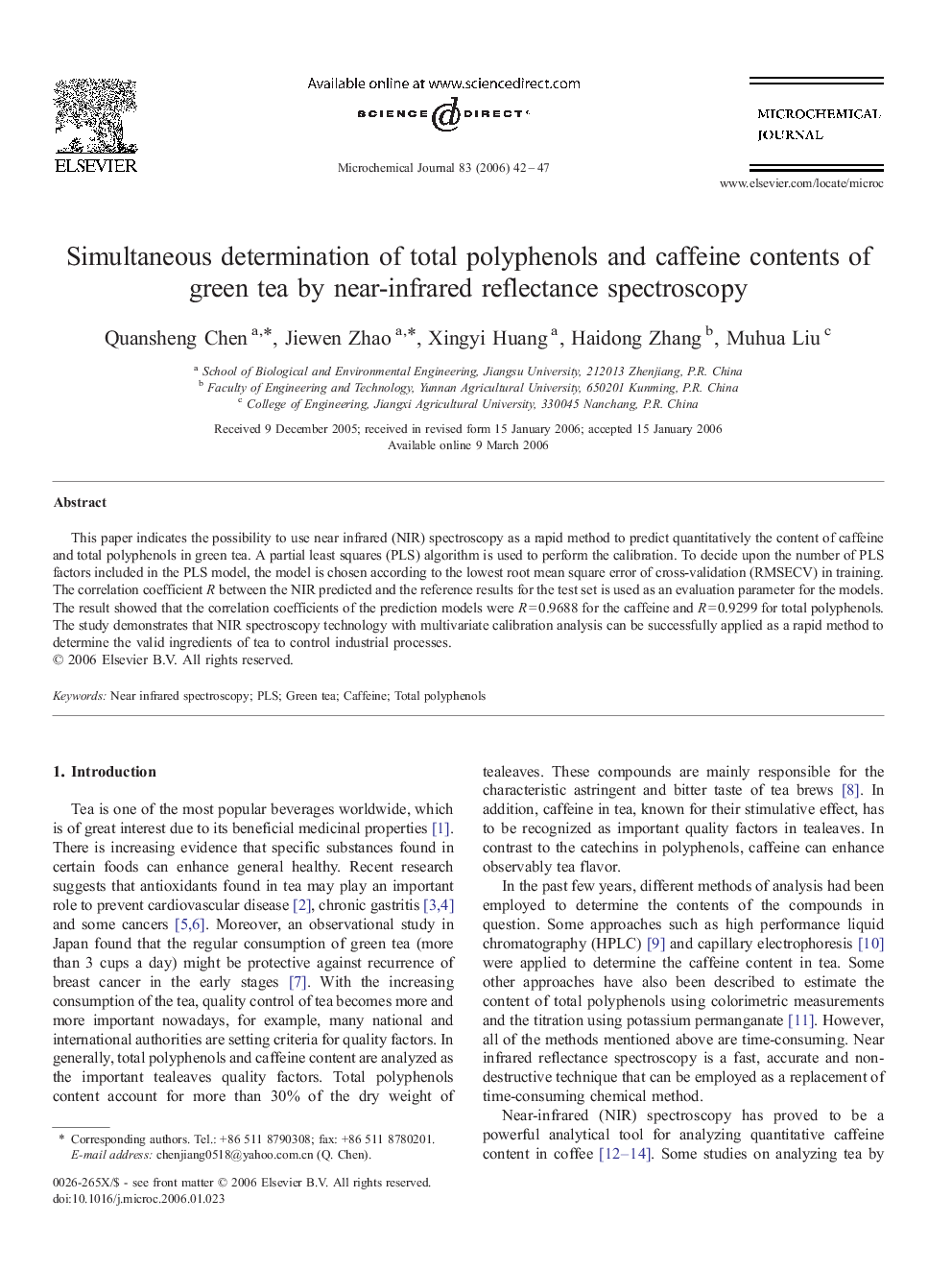| Article ID | Journal | Published Year | Pages | File Type |
|---|---|---|---|---|
| 1228350 | Microchemical Journal | 2006 | 6 Pages |
This paper indicates the possibility to use near infrared (NIR) spectroscopy as a rapid method to predict quantitatively the content of caffeine and total polyphenols in green tea. A partial least squares (PLS) algorithm is used to perform the calibration. To decide upon the number of PLS factors included in the PLS model, the model is chosen according to the lowest root mean square error of cross-validation (RMSECV) in training. The correlation coefficient R between the NIR predicted and the reference results for the test set is used as an evaluation parameter for the models. The result showed that the correlation coefficients of the prediction models were R = 0.9688 for the caffeine and R = 0.9299 for total polyphenols. The study demonstrates that NIR spectroscopy technology with multivariate calibration analysis can be successfully applied as a rapid method to determine the valid ingredients of tea to control industrial processes.
